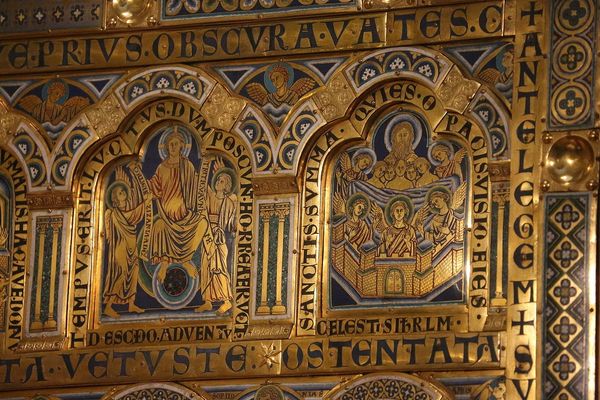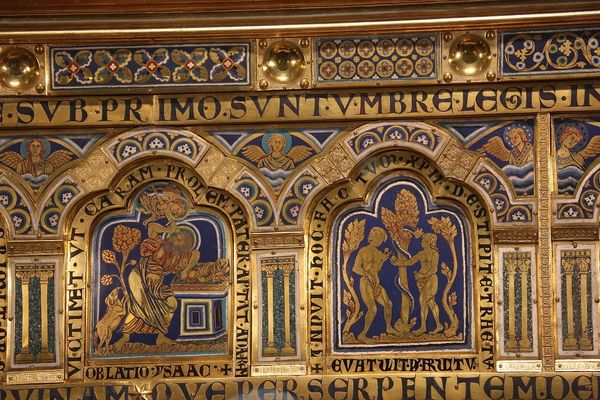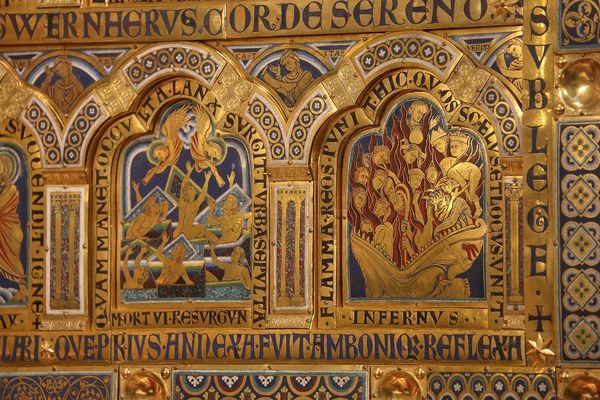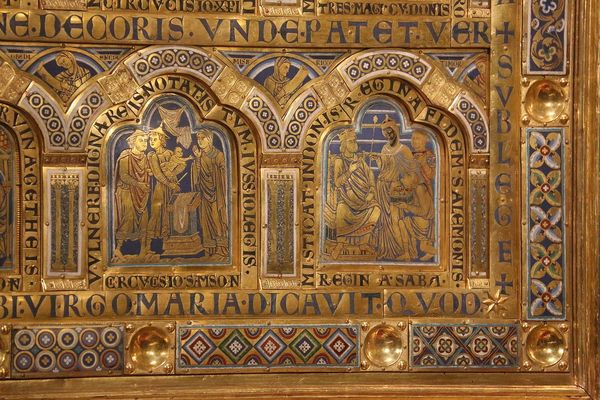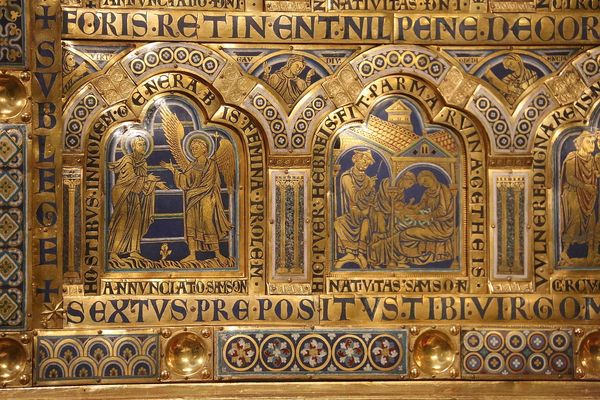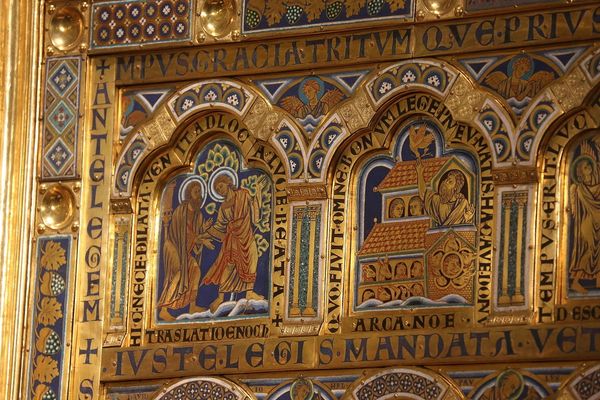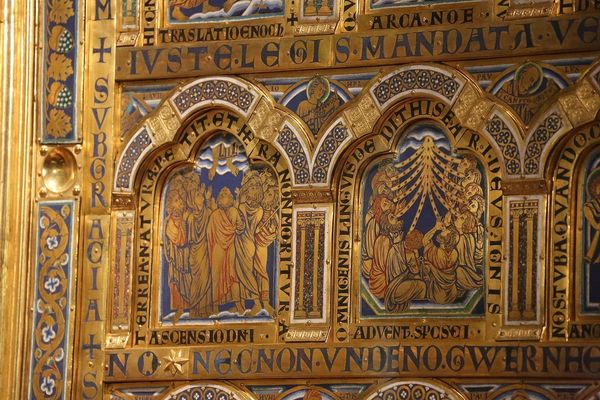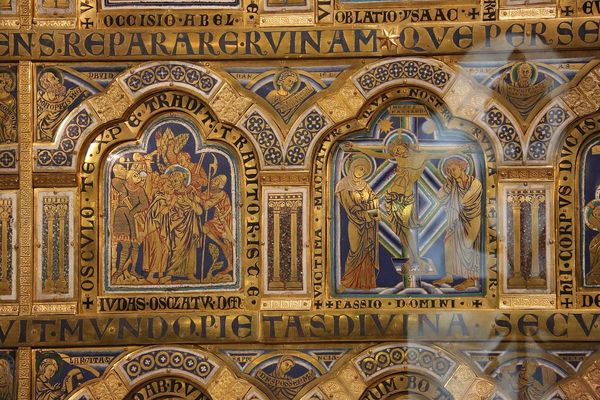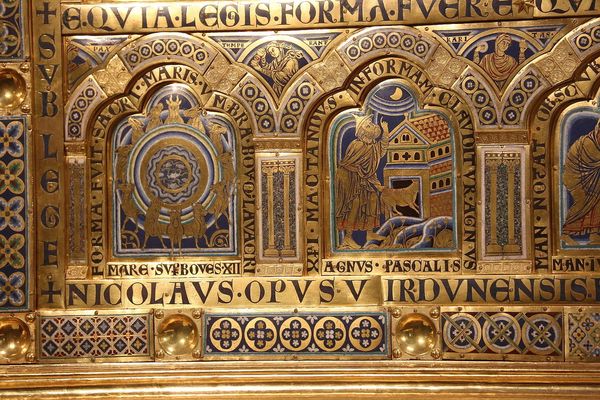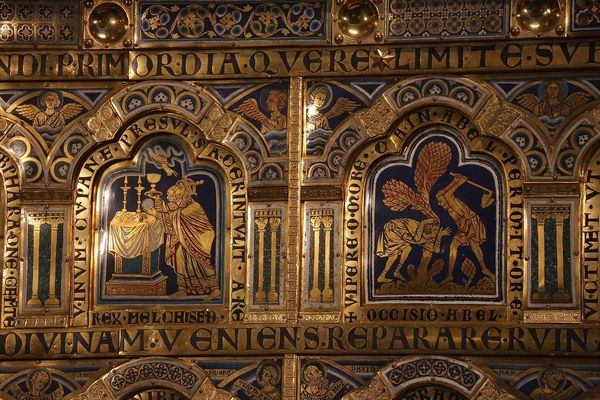
carving, tempera, gold, alabaster, sculpture, enamel, mural
#
medieval
#
carving
#
tempera
#
sculpture
#
gold
#
alabaster
#
romanesque
#
sculpture
#
enamel
#
history-painting
#
mural
Copyright: Public domain
Editor: Here we have a section of the Klosterneuburg Altar, created around 1181 by Nicholas of Verdun. It features tempera, gold, alabaster, and enamel, combining carving and mural techniques. The sheer amount of gold gives the work an opulent, even imposing feeling. What strikes you most when you look at this piece? Curator: I’m immediately drawn to the historical context, and how this altar reflects a complex interplay of power, religion, and cultural identity in the medieval period. Consider the choice of materials—gold, enamel, alabaster. What statement is Nicholas of Verdun making through these opulent materials, particularly during a time marked by social stratification? How might the rising merchant class and their relationship to the church influence art production, creating art that negotiated spiritual messages alongside expressions of worldly power? Editor: That's fascinating. I hadn’t considered the rising merchant class at that time. How does the style contribute to this expression? Curator: The Romanesque style itself, with its formalized figures and emphasis on symbolism, reinforced a specific worldview. The rigid hierarchical presentation reflects and supports the then prevalent social order, the way power was not just wielded but portrayed, cementing class divides through art and faith. Have you thought about the narratives depicted? Editor: I see scenes from the Old and New Testament. What does it mean to position them side-by-side like this? Curator: Precisely. Think about this juxtaposition of the Old and New Testaments as not merely storytelling, but as a visual argument—a justification for a specific theological and social order. Each scene served as a lesson and a warning and an encouragement. The artists deliberately placed specific narrative to promote an interpretation of Christian history which would then enforce moral and social expectations within the populace. These choices reveal how art serves not only a devotional but also an ideological function. What are you taking away from this analysis? Editor: I see now how this piece acts as a political statement beyond just being a religious object. It reinforces specific power structures of the time through both its materials and visual storytelling. Thanks for pointing that out. Curator: Indeed! Analyzing art through the lens of power structures allows us to critically engage with the complex intersection between art, religion, and society and the sociopolitical conditions that underpin our present reality.
Comments
No comments
Be the first to comment and join the conversation on the ultimate creative platform.

